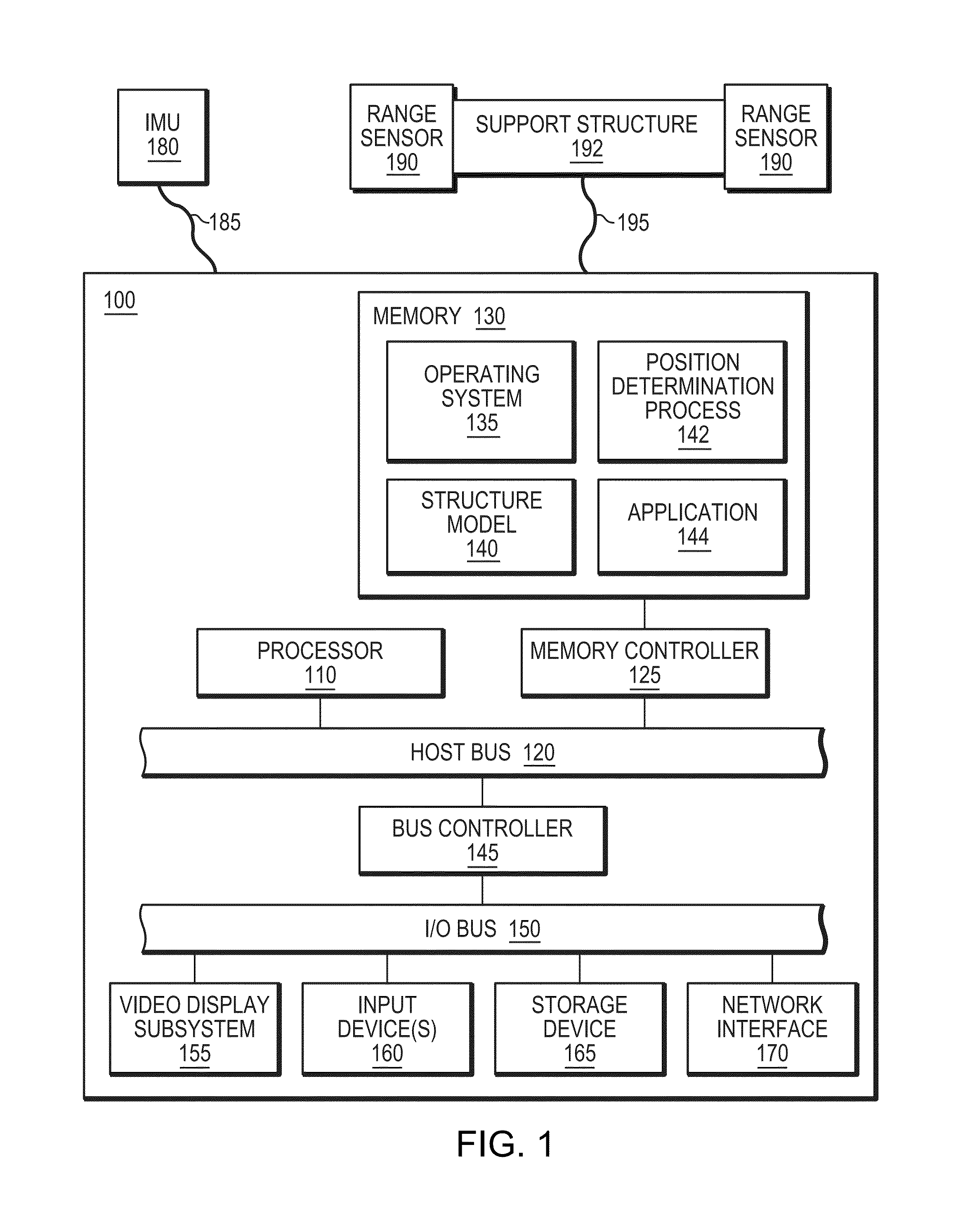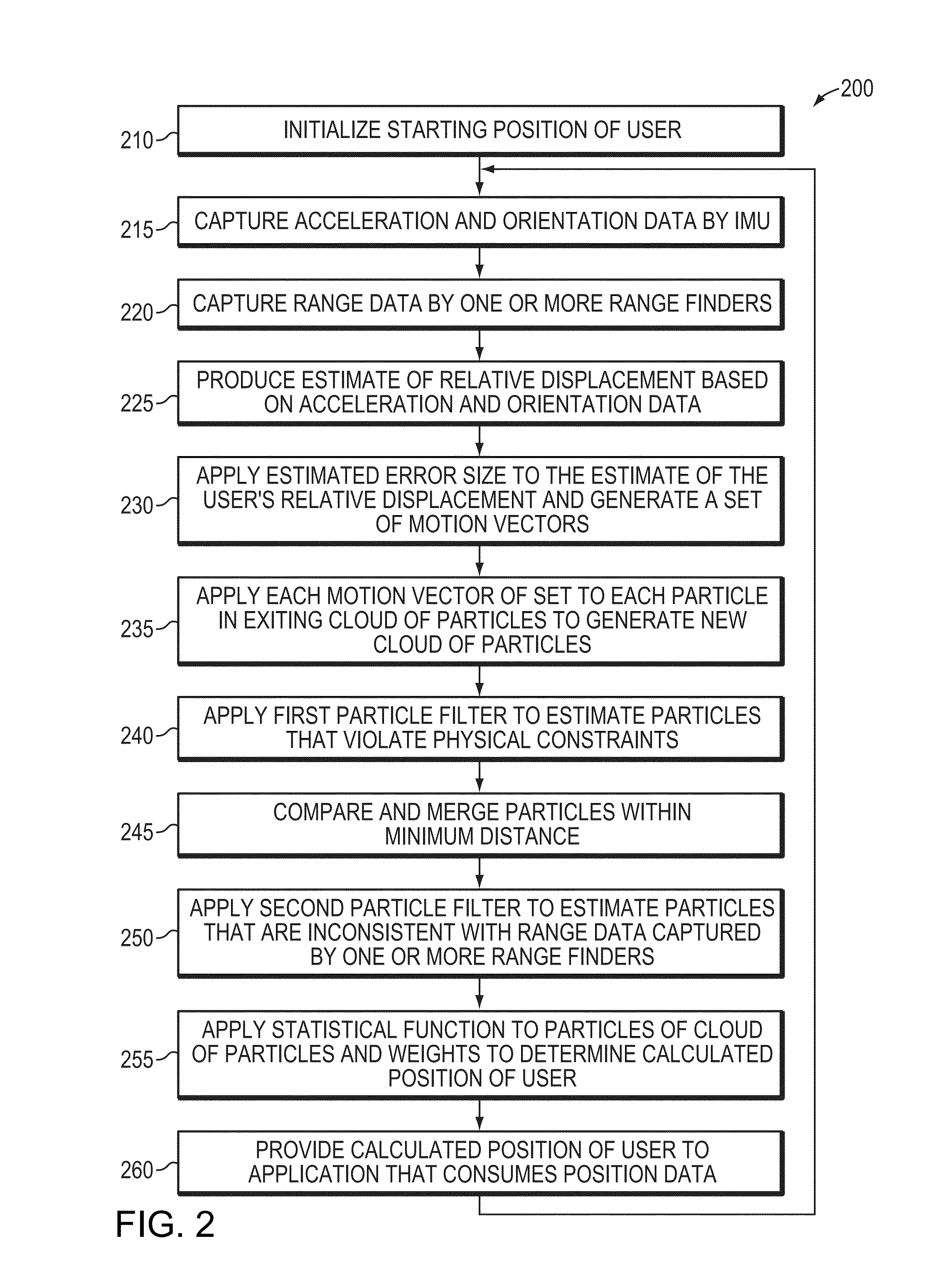Indoor localization based on ultrasound sensors
- Summary
- Abstract
- Description
- Claims
- Application Information
AI Technical Summary
Benefits of technology
Problems solved by technology
Method used
Image
Examples
example embodiments
II. Example Embodiments
[0031]FIG. 1 is a schematic block diagram of an example portable electronic device 100 carried by a user in which at least some of the presently described techniques may be employed. The portable electronic device 100 includes at least one processor 110 coupled to a host bus 120. The processor 110 may be any of a variety of commercially available processors, such as an Intel x86 processor, or another type of processor. A volatile memory 130, such as a Random Access Memory (RAM), is coupled to the host bus 120 via a memory controller 125. The memory 130 is adapted to store at least a portion of computer-executable instructions and data for an operating system 135 while the portable electronic device 100 is operating. In addition, the memory 130 may store at least portions of computer-executable instructions and data for a structure model 140, a position determination process 142 and an application 144 that consumes position data. The structure model 140 may be ...
PUM
 Login to View More
Login to View More Abstract
Description
Claims
Application Information
 Login to View More
Login to View More - R&D Engineer
- R&D Manager
- IP Professional
- Industry Leading Data Capabilities
- Powerful AI technology
- Patent DNA Extraction
Browse by: Latest US Patents, China's latest patents, Technical Efficacy Thesaurus, Application Domain, Technology Topic, Popular Technical Reports.
© 2024 PatSnap. All rights reserved.Legal|Privacy policy|Modern Slavery Act Transparency Statement|Sitemap|About US| Contact US: help@patsnap.com










